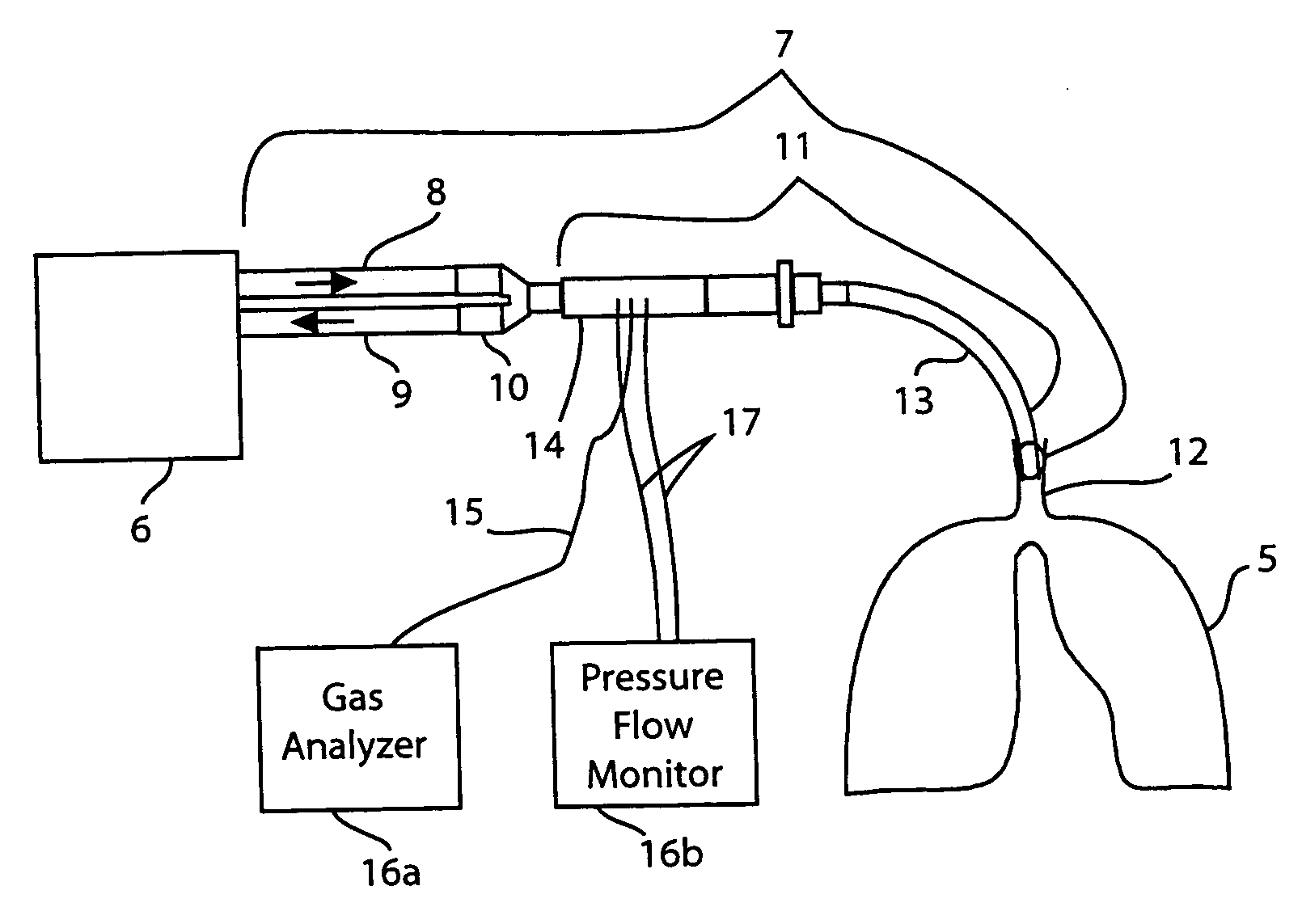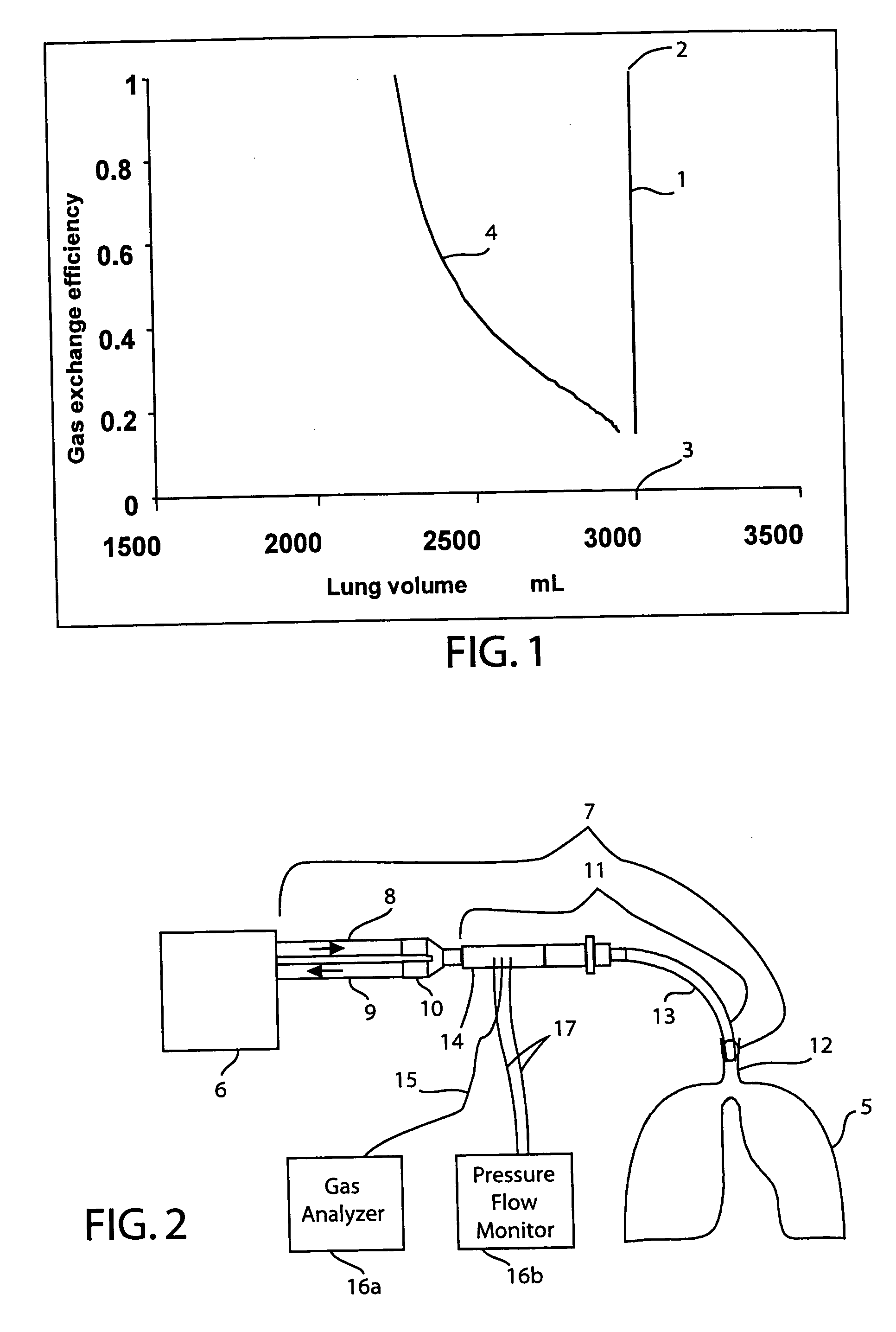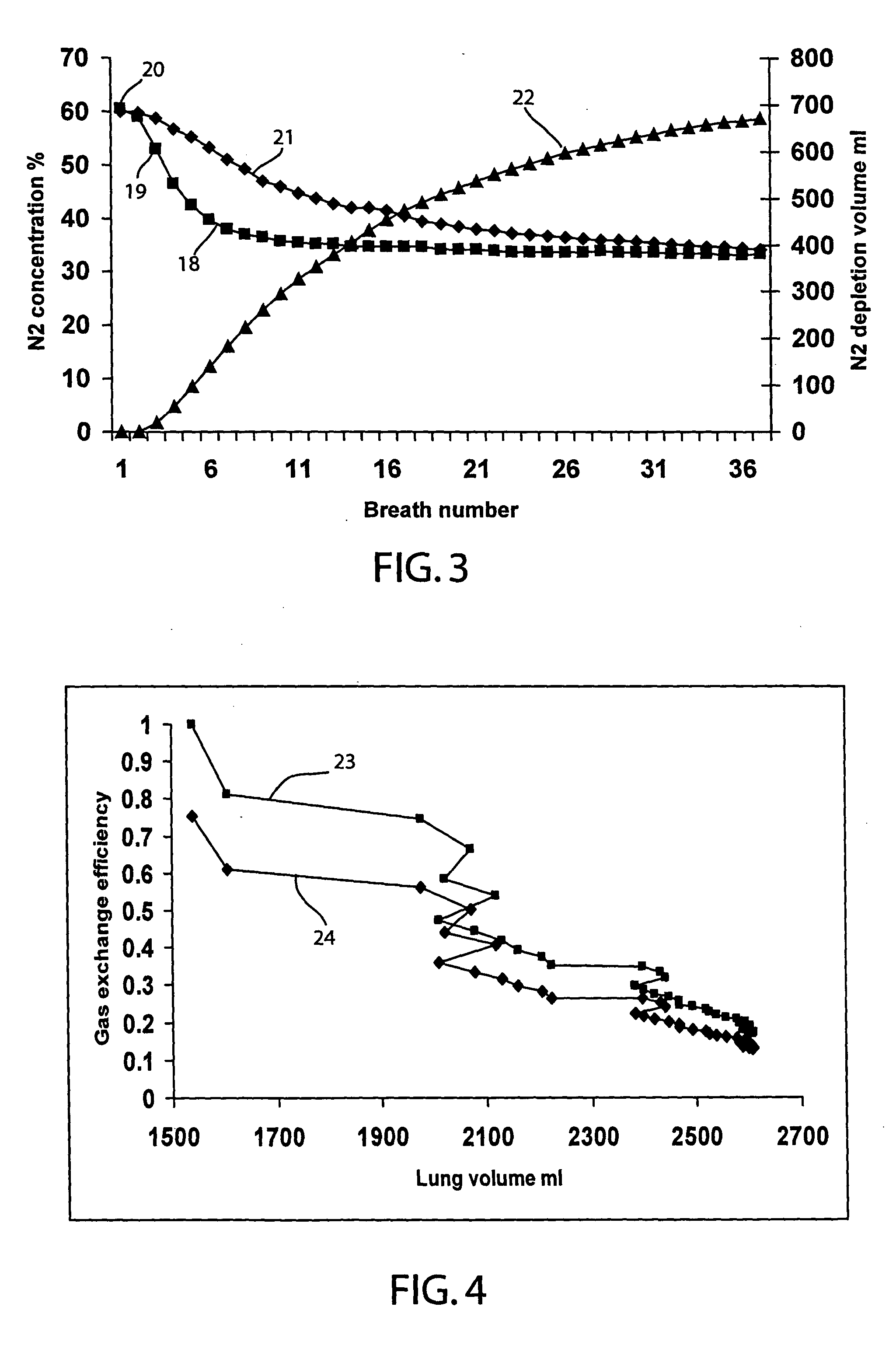Method for indicating the amount of ventilation inhomgeneity in the lung
a ventilation inhomogeneity and lung technology, applied in the direction of inhalators, sensors, medical devices, etc., can solve the problems of uneven ventilation of inspiration gas into the lungs, reducing the total blood oxygenation/cosub>2, and not gaining clinical acceptan
- Summary
- Abstract
- Description
- Claims
- Application Information
AI Technical Summary
Benefits of technology
Problems solved by technology
Method used
Image
Examples
Embodiment Construction
In the preferred embodiment of the present invention described in detail below, a method for determining lung inhomogeneity is described. It should be understood that the drawings and specification are to be considered an exemplification of the principles of the invention, which is more particularly defined in the appended claims.
Referring to FIG. 2, a ventilation therapy apparatus is shown in which a patient's lungs 5 are connected to ventilator 6 via breathing circuit 7. The breathing circuit 7 comprises inspiration limb 8, expiration limb 9, Y-piece 10, and patient limb 11. During the inspiratory phase of a respiratory cycle, pressurized inspiration breathing gases of a desired composition are conducted from ventilator 6 through the inspiration limb 8, to Y-piece 10 and further through patient limb 11 to patient airways 12 and lungs 5. During inspiration, ventilator 6 closes the expiration limb 9 with an expiration valve (not shown) located within ventilator 6 to force the pre...
PUM
 Login to View More
Login to View More Abstract
Description
Claims
Application Information
 Login to View More
Login to View More - R&D
- Intellectual Property
- Life Sciences
- Materials
- Tech Scout
- Unparalleled Data Quality
- Higher Quality Content
- 60% Fewer Hallucinations
Browse by: Latest US Patents, China's latest patents, Technical Efficacy Thesaurus, Application Domain, Technology Topic, Popular Technical Reports.
© 2025 PatSnap. All rights reserved.Legal|Privacy policy|Modern Slavery Act Transparency Statement|Sitemap|About US| Contact US: help@patsnap.com



